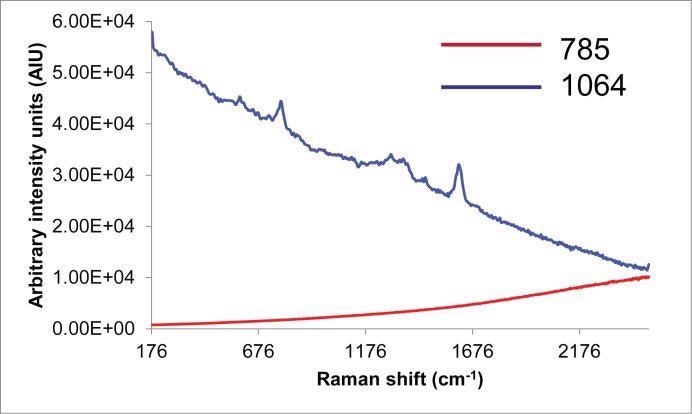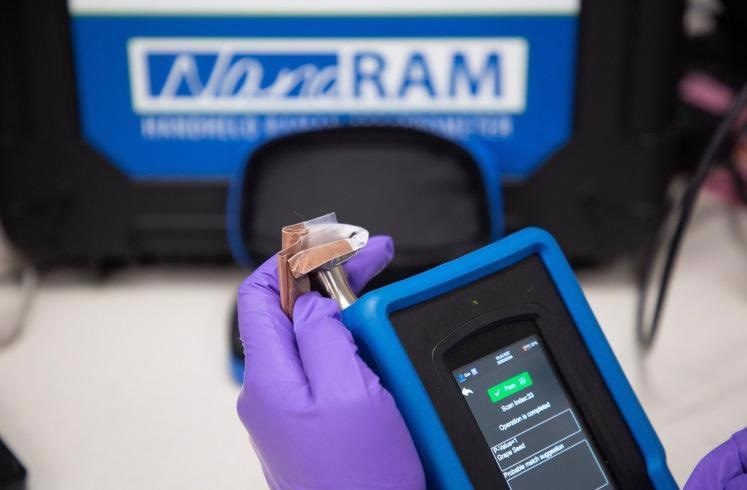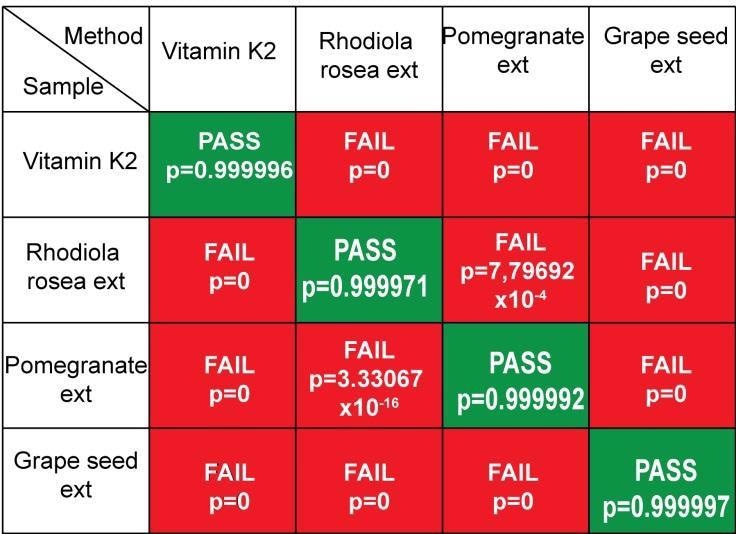Botanical medicine laid the groundwork for pharmaceutical benefits that exist today before the technological advancements of science. Botanicals come from plant materials and are utilized for their therapeutic and medicinal properties.
They are the key part of the dietary supplement market known as nutraceuticals, which is promoted to the public as a holistic alternative to typical pharmaceutical drugs. The U.S. Food and Drug Administration (FDA) does not regulate the nutraceutical market as heavily as the pharmaceutical drug market.
Nutraceuticals manufacturers of botanicals adhere to Good Manufacturing Practice (GMP) requirements under the FDA in order to ensure quality, identity, purity, composition and strength, which qualifies for the necessary testing prior to consumption.
Raman is ideal for use in the testing of botanical samples. Each sample is different and possesses varied chemical components and some fluoresce more than others. Due to strong fluorescence (Fig. 1, red trace), a typical handheld Raman device with a 785nm laser cannot identify the grape seed extract.
B&W Tek’s NanoRam®-1064 can enable the visibility of a identifying peaks for quick handheld Raman analysis by minimizing some of the fluorescence from the grape seed extract (Fig. 1, blue trace).

Figure 1. Raman spectra of Grape seed extract collected with 785 nm and 1064 nm laser excitations. Image Credit: B&W Tek
The NanoRam-1064 operating and records management software are 21 CFR Part 11 compliant with complete audit trail; it is a handheld Raman device that is fully compliant with all major pharmacopeias.
Technique
In order to analyze four different types of botanical samples sealed in plastic sample bags (Fig. 2), a NanoRam-1064 with a point and shoot adapter was utilized. The samples include vitamin K2, and Rhodiola rosea, pomegranate, and grape seed extracts.

Figure 2. Analyzing Grape seed extract with 1064 nm laser with point and shoot adapter. Image Credit: B&W Tek
For the Vitamin K2 sample with a yellow pigmentation, the laser power was set at 90% of the maximum power (~380 mW). For the remaining three samples, the laser power was set at 10% (~42 mW) because of darker colored samples.
The NanoRam-1064 Identification mode was used for this examination, as it supplies a robust algorithm based on a multivariate technique. An individual method was created for each botanical sample. Each sample was scanned five different times in alternate spots to create a method and to prove validity; all samples were tested against each technique.
Results
The validity of a technique is dependent on each approach having to prove its 'specificity' where the correct sample passes and all other samples fail. The statistical significance (p-value) establishes the samples passing or failing the method. The NanoRam-1064 p-value threshold is p=0.05, which corresponds to the default significance level set for the botanical techniques.
Calculated p-values that are lower than p=0.05 result in a 'Fail' result and p-values over p=0.05 show a 'Pass' result. Table 1 shows a matrix of pass/fail results for each individual botanical method; each one can selectively pass its own sample and fail all other samples.
Table 1. Botanicals specificity matrix. Source: B&W Tek

Conclusion
The NanoRam-1064 is an ideal pharmaceutical device for the minimization of fluorescence in raw materials identification. The NanoRam-1064 could reduce the fluorescence in different botanical ingredients, enabling them to be analyzed and tested against each individual sample technique for robust identification.
Acknowledgments
Produced from materials originally authored by Vanessa Mayle and Kristen Frano from B&W Tek, LLC.

This information has been sourced, reviewed and adapted from materials provided by B&W Tek.
For more information on this source, please visit B&W Tek.